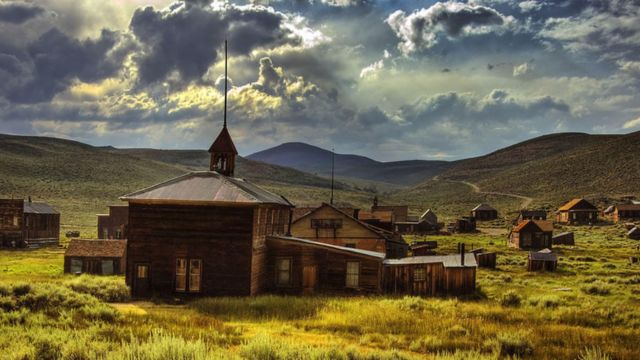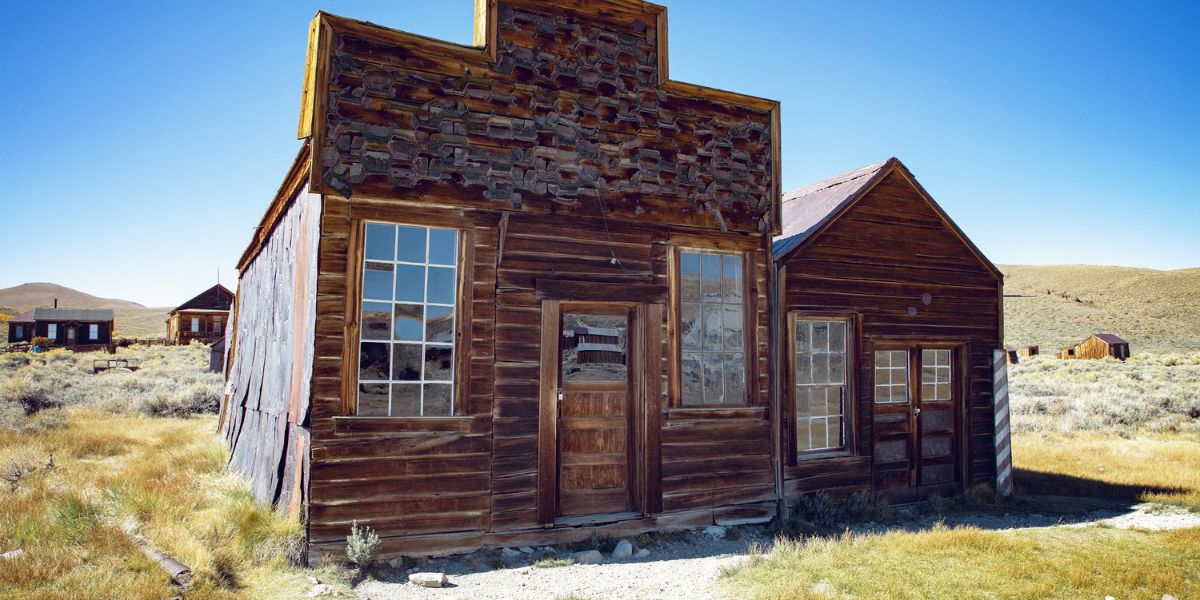A time capsule, Bodie, California is all but deserted. Bodie, a town that was once a thriving hub for gold mining, now stands as a chilling reminder of the troubled history of the American West. Bodie is an intriguing location for history buffs and inquisitive tourists due to its fascinating story of boom, bust, and abandonment.
How Bodie Came to Be
W.S. Bodey, a prospector, found gold in the highlands east of the Sierra Nevada in 1859, and the story of Bodie started. Sadly, Bodey did not live to see the town that would be named after him because he passed away in a snowstorm not long after his discovery.
The discovery of large gold deposits in 1876 brought thousands of explorers and miners looking for a fortune. With an impressive population of about 10,000 and more than 2,000 buildings, Bodie had rapid growth during the 1870s and 1870s.

Many people came to California during the thriving gold rush era, and Bodie remains a remnant of that time.
Boomtown was a time
Bodie, in its prime, was a thriving town known for its rampant vice and disorder. “The wildest town in the West” was the nickname given to Bodie because of its many brothels, saloons, and gambling halls.
SEE MORE –
The 5 Most Haunted Places in Los Angeles: Ghosts, Legends, and Mysteries
People from all walks of life flocked to the town because of its wealthy gold mines, which generated over $35 million worth of gold and silver. Lots of Chinese people came to Bodie to work in the mines and run companies, so much so that there was a Chinatown there.
Bodie, despite its image, was a progressive and innovative community. Not only did it have a fire department, telegraph office, and many newspapers, but it was also one of the earliest towns in California to obtain electricity. One of Bodie’s most lucrative mines, the Standard Mine, processed ore using cutting-edge technology, such as a 20-stamp mill.
The Reduction
The boomtown of Bodie, like many others, did not last. The population began to decline in the 1880s as the mines produced less gold. The nationwide economic downturn known as the Panic of 1893 accelerated Bodie’s decline even more. Businesses and miners left town as it fell into disrepair due to their pursuit of more profitable opportunities.
Bodie was never able to regain its previous splendor despite multiple efforts to revitalize the mines, including short revivals during World War I and the 1920s. Only a handful of long-term inhabitants remained in the town by the 1940s. The mining period in Bodie came to a halt in 1942 when the last mine was closed.
Preservation as a State Historic Park
In 1962, recognizing the historical significance of Bodie, the state of California designated it as a State Historic Park. The town is preserved in a state of “arrested decay,” meaning that while no new buildings are constructed, existing structures are maintained to prevent further deterioration. Visitors can explore over 100 remaining buildings, including the schoolhouse, church, and several homes and businesses, which offer a glimpse into life during Bodie’s heyday.
Bodie State Historic Park attracts thousands of visitors each year who are drawn to its eerie beauty and rich history. Walking through the deserted streets, one can almost hear the echoes of the past—miners’ picks striking ore, saloon doors swinging, and children playing in the schoolyard.
The story of Bodie, California, is a captivating chapter in the history of the American West. From its meteoric rise as a gold-mining boomtown to its decline and preservation as a ghost town, Bodie stands as a testament to the fleeting nature of fortune and the enduring spirit of the people who once called it home.
Today, Bodie remains a hauntingly beautiful destination, offering visitors a unique opportunity to step back in time and experience the wild and unpredictable life of the Old West.




